What are the tax and investment considerations for a Granny Flat above versus a Tiny Home below? Income Tax Return Reporting - Income Streaming Tiny Homes Tiny home ownership does not have to follow the ownership interest of the underlying property ownership. For...
Self Managed Superfunds – SMSF
 Why SMSF
Why SMSF
You have the potential to borrow and or invest directly into property
Transfer assets, listed shares, real property into your own SMSF
The freedom to formulate your own investment plan
4 members of the family can share the SMSF to pool up to 4 members assets to get better economies of scale
Get away for retail fund managers
“The best time to plant a tree was 20 years ago. The second best time is now”
Our Service Fees
We are here to make the administration of your SMSF as easy as possible and that includes the fees structure. We offer two SMSF administration services with fees that are transparent and simple to understand. Our standard fees are not based on the size of your SMSF or the number of transactions.
Unlike some other SMSF administration companies, we do not require to you to use any particular bank or investment product or platform, nor do we restrict the type of investments you can have; after all SMSFs are about you taking control of your retirement. This gives you peace of mind that there are no hidden costs.
All prices are GST inclusive.
SMSF Administration – Online Access Service*
Ideally suited to clients where:
- Electronic data-feeds can be set up for their SMSF’s transactions (most bank and share registry data is eligible)
- They want regular access the SMSF’s financial position and/or performance
- They want regular compliance monitoring of the SMSF transactions
- They prefer to access and store their SMSF records online
Includes:
- Access to your SMSF’s investment register and financial reports via our secure online SMSF Portal
- Annual subscription for SuperStream registration (where requested)
- Preparation of annual financial reports, member statements & tax returns
- Preparation of accounting and compliance workpapers
- Liaising with the SMSF’s auditor
- Lodgement of the SMSF tax return
And where applicable:
- Annual pension calculations
- Preparing and lodgement of PAYG income and withholding tax obligations (GST / Business Activity Statements are a separate fee)
SMSF Administration – Annual Service^
For clients that:
- Are not eligible for the electronic data-feeds service
- Just prefer the SMSF’s financial statements to be prepared on annual basis with no regular monitoring, reporting or online access
Includes:
- Preparation of annual financial reports, member statements & tax returns
- Annual subscription for SuperStream registration (where requested)
- Preparation of accounting and compliance workpapers
- Liaising with the SMSF’s auditor
- Lodgement of the SMSF tax return
And where applicable:
- Annual pension calculations
- Preparing and lodgement of PAYG income and withholding tax obligations (GST / Business Activity Statements are a separate fee)
| Additional administration services |
||
| SMSF audits | You can either use your own preferred registered SMSF auditor, or alternatively use one of the independent auditors from our audit panel | Typically between $385 – $660 |
| GST / Business Activity Statements | Preparation and lodgement of:- Quarterly BAS – Annual GST Return |
$198 each $308 each |
| Actuarial certificates | If your SMSF is in pension phase and requires an annual certificate (no mark up on fee from Actuary) | $176 |
| Pension commencement documentation | One off fee, discounts may apply where multiple pensions are commenced at same time | $360 |
| Investment Strategy | Template strategy designed for you and/or your advisers to complete to ensure compliance with superannuation legislation | $286 |
| Property Title & Company searches | Only where required for audit purposes to confirm asset registration and director and shareholder details | $20 – $50 per search |
 He Can Help With
He Can Help With
Call us today to see how you can take control of your retirement funds.
SMSF options you might want to consider –
- Increase the number of members in your SMSF: An SMSF can have up to four (4) members. The more members there are in an SMSF, the more that can be contributed into the SMSF. For example, four members under the age of 65 can contribute a total of $540,000 x 4 = $2,160,000 in one financial year using the two year bring forward rule. This may allow your SMSF to acquire larger investment assets sooner, resulting in quicker wealth accumulation.
- Lend money to your SMSF: If you have cash available, you could lend money to your SMSF. The loan is not counted as a contribution and will allow your SMSF to acquire larger assets to accumulate wealth.
- Transfer your business premises into your SMSF: If you own the premises that you conduct your business from, you could sell the property to your SMSF and lease it back. The lease payment is not considered a contribution and will help accumulate more money in your SMSF.
- Purchase a property via a related entity: You can establish a company or a unit trust and jointly own a property with your SMSF via this entity. This will allow your SMSF to receive rental income via dividends or trust distributions without the need to enter into any borrowings.
- Transfer assets you own to your SMSF: If you are “cash poor” but “asset rich”, you might consider transferring assets you own, such as listed securities or business real property, into your SMSF. These assets can be transferred as in-specie contributions into your SMSF or purchased by your SMSF directly by cash payment or via a limited recourse borrowing arrangements. You do need to consider your contributions caps if transferring assets as contributions, but not if you are selling the assets. You also cannot transfer residential properties to your SMSF.
- Purchase a property jointly with your SMSF: Another way you and your SMSF can acquire a property together is via a tenants-in-common arrangement. If the property is a business real property, it can also be leased back to you. If it is a residential property that is not used in any business, it cannot be leased to you.
- Small business Capital Gains Tax (CGT) concessions: If you qualify for the small business CGT concessions, you can sell your business premises and contribute either the capital gains or the sale proceeds into your SMSF without the money being counted towards your contributions caps. This means you can contribute an additional $1,355,000, which is the maximum lifetime CGT limit.
- Personal injury payment: In the event that you received compensation for a personal injury, consider contributing the money into your SMSF as it is not counted towards your contributions caps. There is no limit on the amount that can be contributed as long as the payment meets certain requirements.
- Exceed your concessional-contributions cap: If you want to make contributions into your SMSF in excess of the concessional contributions caps, the excess amount will attract 47% tax plus the Medicare Levy and will also be counted against your non-concessional contributions cap. As long as you don’t exceed the non-concessional contributions cap also, it would mean you are paying tax at your highest marginal tax rate. Paying the maximum tax on contributions may not matter to you if the investment earnings from the investment of this money are taxed in your SMSF at the maximum concessional rate of 15%, instead of it being taxed at your marginal tax rate if you held the investment outside of your SMSF. The tax payable on the investment earnings is reduced to 0% once your SMSF is in pension phase.
- Exceed your non-concessional contributions cap: If you contribute more than your non-concessional contribution, the excess contribution is taxed at 47% plus the Medicare Levy. Again, you may not care as you will be paying this rate of tax anyway if you received the income outside of an SMSF. The good thing is the investment earnings are taxed at the maximum rate of 15% in your SMSF and 0% once your SMSF is in pension phase. Information Curiosity of Law Central
| Commercial Property and your SMSF |
by John Wojtowicz (Director – Law Central Legal)
It is a common and popular investment for Trustees of an SMSF to purchase freehold property.
Often a small business owner may purchase the land through their SMSF and then have the fund lease the property back to the business. This bulletin focuses on the need to have such a transaction properly documented. Issues relating to the financing of the purchase by the SMSF will be addressed in a future bulletin.
What is a Commercial Lease?
A lease is a legally binding agreement between the landowner and the tenant that creates an interest in the land that is subject to the lease. The lease gives the tenant security of tenure and is essential to establishing the goodwill value of the business and its future resale value. In certain businesses this may be critical if the location is core to the value of the business – e.g. a lotto kiosk at a shopping centre.
Lease documents will, in nearly all cases, contain certain common terms – e.g. the term of lease, rent and outgoings payable, tenant obligations and landlord obligations. Other terms may include a redevelopment clause or a specific clause or clauses relating to the particular business leasing the land.
Certain legislation in each State may also affect what terms can be enforced in a lease. The most common example of this relates to a situation where the proposed tenant is a “Retail Shop’ (the law on this area will be different from State to State).
Interest in Land- to be in writing
Under various State Acts, for an interest in land to be binding then such an interest needs to be in writing:
New South Wales – section 23C Conveyancing Act 1919
Victoria – section 53 Property Law Act 1958
WA – section 34 Property Law Act 1969
Queensland – section 11 Property Law Act 1974
South Australia – section 29 Law of Property Act 1936
Tasmania- section 60 Conveyancing and Law of Property Act 1884
In short a “hand shake” deal to create a binding lease will not be binding – it must be in writing. (In certain circumstances the court may enforce a verbal agreement under equitable principles. The law in this area is complex and the court decisions vary depending on the facts of each case).
SMSF and Commercial Leases
If a SMSF wants to own freehold land and lease it back to a business that is a related party of the SMSF then the land or property in question must comply with the definition of “Business Real Property” (BRP) under the Superannuation Industry (Supervision) Act 1993 (SIS Act).
Section 66(5) of the SIS Act states the following definition of BRP:
“ “business real property”, in relation to an entity, means:
- any freehold or leasehold interest of the entity in real property; or
- any interest of the entity in Crown land, other than a leasehold interest, being an interest that is capable of assignment or transfer; or
- if another class of interest in relation to real property is prescribed by the regulations for the purposes of this paragraph–any interest belonging to that class that is held by the entity;
where the real property is used wholly and exclusively in one or more businesses (whether carried on by the entity or not), but does not include any interest held in the capacity of beneficiary of a trust estate.”
In summary, when an SMSF purchases property to lease back to a related party business it should:
- have this investment contained in its investment strategy;
- make sure that the property falls within the definition of a BRP under the SIS Act;
- have a written commercial lease agreement in place – on commercial terms; and
- ensure that the terms of the lease are complied with at all times.
Disclaimer: The content of this Bulletin is general information only. It is not legal advice. Law Central recommends you seek professional advice before taking any action based on the content of this Bulletin.




